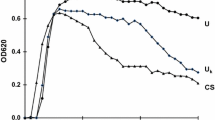Abstract
Spectrophotometric and scanning electron microscopic (SEM) studies of oxalate-induced crystallization have been performed in whole urine with and without continuous magnetic stirring and before and after millipore filtration of urine. With continuous stirring, preferential nucleation was observed and this followed second order kinetics. Important crystal aggregation only occurred after an oxalate load above 1 mmol/l and without stirring. Under these conditions and at an ionic calcium concentration of 2 mmol/l, single crystals and aggregates of calcium oxalate dihydrate and monohydrate of well defined sizes were produced. Single dihydrates, their aggregates and the other particles could be distinguished by their significantly different sedimentation rates. From sedimentation curves an aggregation ratio for calcium oxalate dihydrate (aggregated/total dihydrate particles) was extrapolated. Millipore filtration removing important urinary macromolecules increased this aggregation ratio as well as the size of the aggregates on SEM pictures.
Similar content being viewed by others
Author information
Authors and Affiliations
Additional information
Received: 16 June 1999 / Accepted: 16 February 2000
Rights and permissions
About this article
Cite this article
Baumann, J., Affolter, B., Caprez, U. et al. Nucleation and aggregation of calcium oxalate in whole urine; spectrophotometric sedimentation analysis: a new approach to study the aggregation of calcium oxalate dihydrate. Urological Research 28, 147–154 (2000). https://doi.org/10.1007/s002400000108
Issue Date:
DOI: https://doi.org/10.1007/s002400000108




